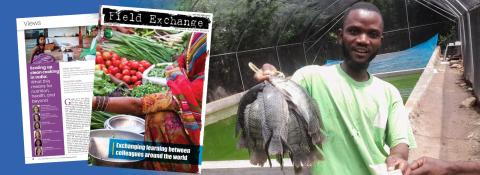Navigating School Health Programmes Amidst COVID-19: A Scoping Review
This is a summary of the following paper: Carducci B, Dominguez G, Kidd E et al (2024) Pivoting school health and nutrition programmes during COVID-19 in low- and middle-income countries: A scoping review. Journal of Global Health, 14. https://doi.org/10.7189/jogh.14.05006
Nutrition profoundly influences the development of children and adolescents aged 5–19 years. Recognising its significance, the International Commission on Financing Global Education Opportunity prioritised health and nutrition interventions for improved learning outcomes. This scoping review addresses the gap in the literature concerning school health and nutrition programme adaptations during the COVID-19 pandemic, aiming to synthesise evidence on strategies, impacts, and challenges. The goal was to guide stakeholders on immediate and long-term responses to mitigate adverse effects on children and adolescents in low- and middle-income countries due to reduced access to essential school-based resources. The review searched literature from January 2020 to June 2023, focusing on primary and secondary studies conducted in low- and middle-income countries involving children and adolescents aged 5–19 years.
This review encompasses 23 studies, each presenting different adaptation strategies and programme emphases. These include access to school meals (n=8), health services such as immunisations, eye health, and water, sanitation, and hygiene activities (n=4), physical activity curriculum and exercise training (n=3), mental health counselling and curriculum (n=3), and multi-component approaches (n=5). Importantly, there was a notable absence of quantitative data on modified programme coverage, utilisation, and related impacts on children and adolescents' health and nutrition.
Findings revealed that multi-component programmes in various countries adopted diverse strategies in response to the COVID-19 pandemic. Some continued in-school nutrition programmes with adjustments for physical distancing, while others shifted entirely to virtual platforms or distributed services outside schools. School feeding programmes faced suspension challenges, prompting alternative approaches like distributing meals and food kits to students' homes or providing financial compensation. In-school health services were mostly halted, leaving students vulnerable to infectious diseases. Physical activity programmes shifted to virtual formats, showing promise in reducing anxiety and improving physical fitness. Mental health programmes adapted to virtual counselling, facing challenges in maintaining student engagement and support.
This review underscores the scarcity of evidence concerning school health and nutrition programming during the pandemic. It stresses the necessity of monitoring such programmes regularly, both in ordinary times and during crises, to gauge the effectiveness of adapted initiatives and inform evidence-based policymaking. While adhering to World Health Organization global standards and indicators is essential at national and school levels, future research should prioritise establishing a comprehensive monitoring and evaluation framework for schools, utilising existing data sources to track key health and nutrition indicators for children and adolescents.
Following this review, the authors concluded that if we are to learn one thing from the COVID-19 pandemic and its impact on the health and well-being of children and adolescents, it is that:
“The continued provision of educational, health, and nutrition services should be of paramount concern for stakeholders and policymakers across all sectors and levels of government”.


